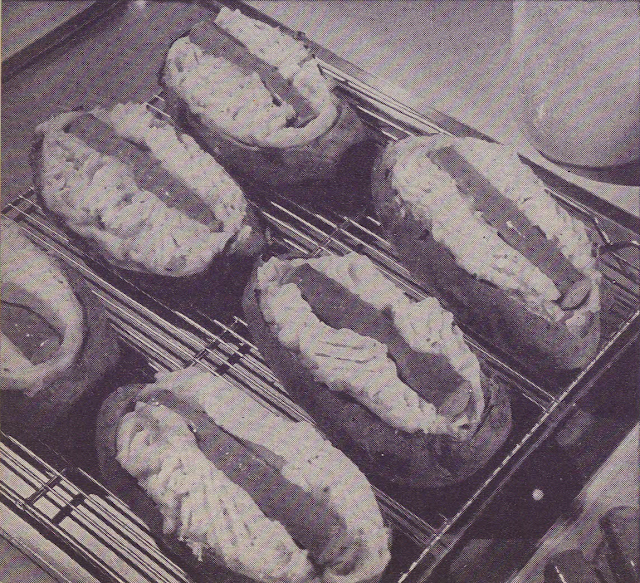Gotta love the tomato and mushroom tentacle reaching down the side of the plate. Maybe that's what distracted the cover designers enough that they couldn't remember what they were calling this collection.
I was a little surprised by the content. There aren't too many books where you will see recipes like these side by side:
It's surprisingly inclusive to have Eggs with Shrimp and Scrambled Matzoth together, but they really are printed like this right in the book! I didn't cut and paste them together. These recipes are willing to live and let live.
And this book is not quite as timid with seasonings as a lot of other books of the same vintage:
A bit more timidity may be in order, though. Four tablespoons is a full quarter cup of curry powder, which seems more than a bit excessive for a six-egg scramble to me, unless curry powder back then was waaay weaker.
The real highlight of this collection is the pictures, though. There were no food stylists sweating over the Eggs and Macaroni:
I would be hard pressed to guess what this dish is supposed to be if it didn't have a caption. Maybe "Random Untopped Casserole #5"? It's just a bit swirl of semi-solid ingredients-- apparently macaroni, hard-cooked eggs, white sauce, pimientos, and cheese-- but it could be some kind of a whipped gelatin salad or diced sweat socks with white sauce for all I can tell.
The next recipe doesn't look so great to me. I think celery is super-boring, so any recipe that features it prominently can only hope for a yawn, at best, as my reaction:
Hard-cooked eggs, cold boiled celery, and salad dressing? "Sign me up!" says no one. Still....
...even I think it's rude just to barf on the plate like that.
Speaking of bodily fluids, I suspect this is a picture of eggs with really bad colds:
I honestly can't figure out which recipe this picture is supposed to represent, but I do know when their mucus is that color, the eggs really should get to their doctor for a check-up.
Happy Wednesday, and try not to barf on the eggs!















































